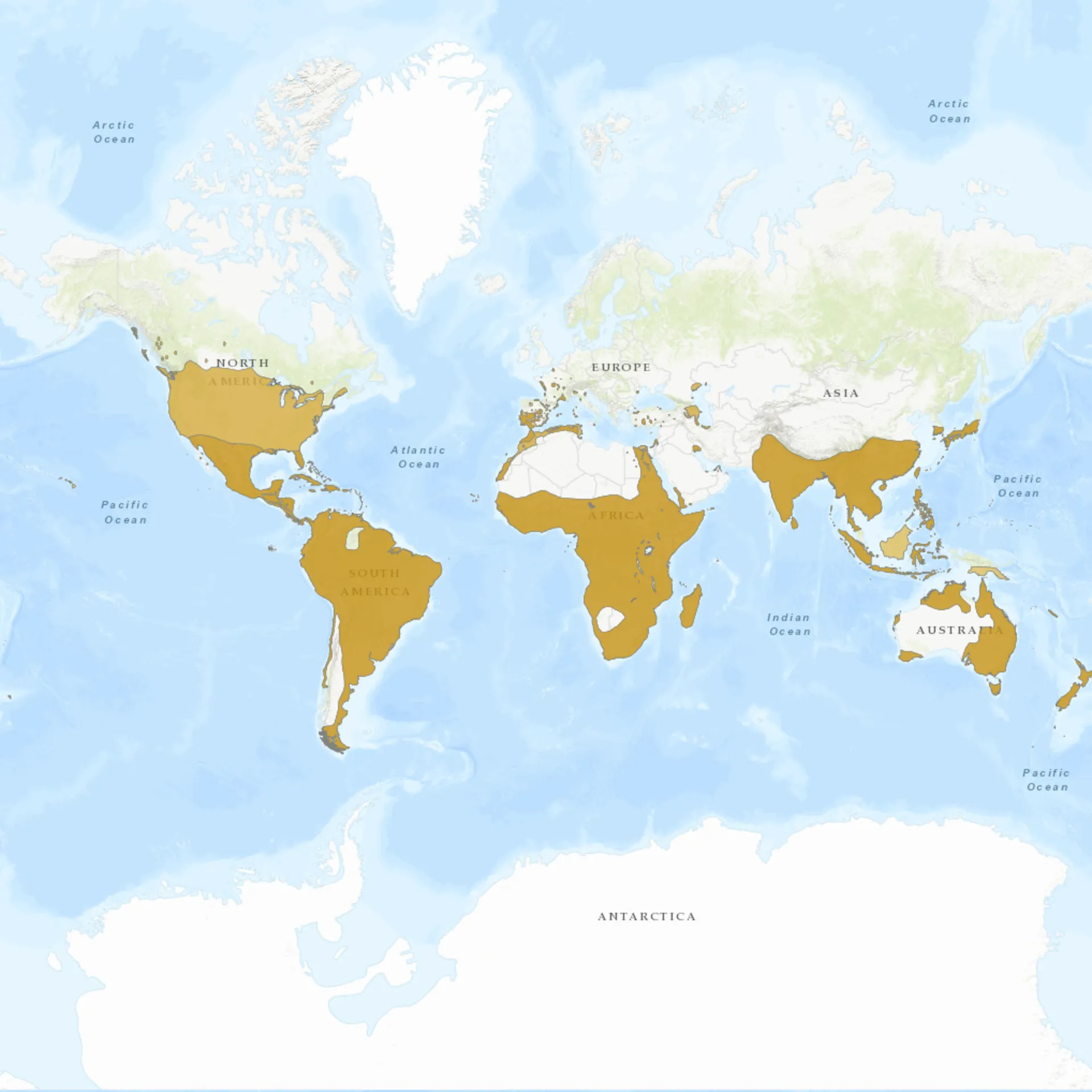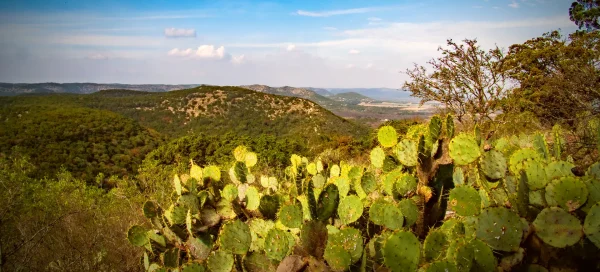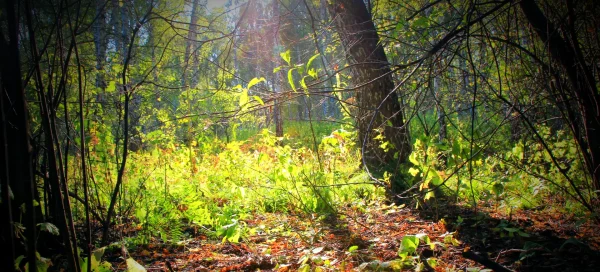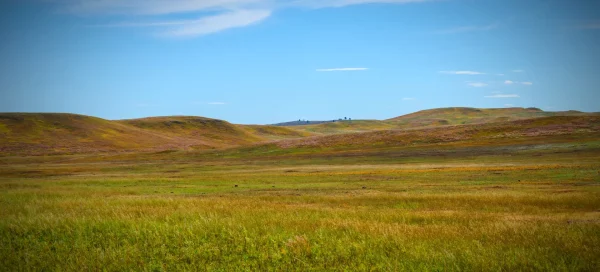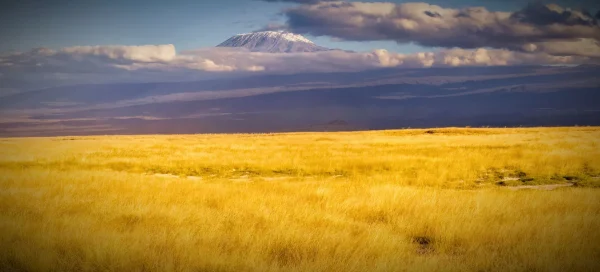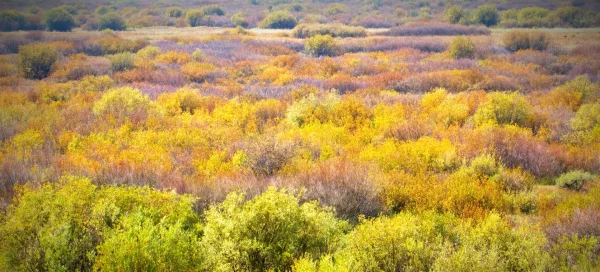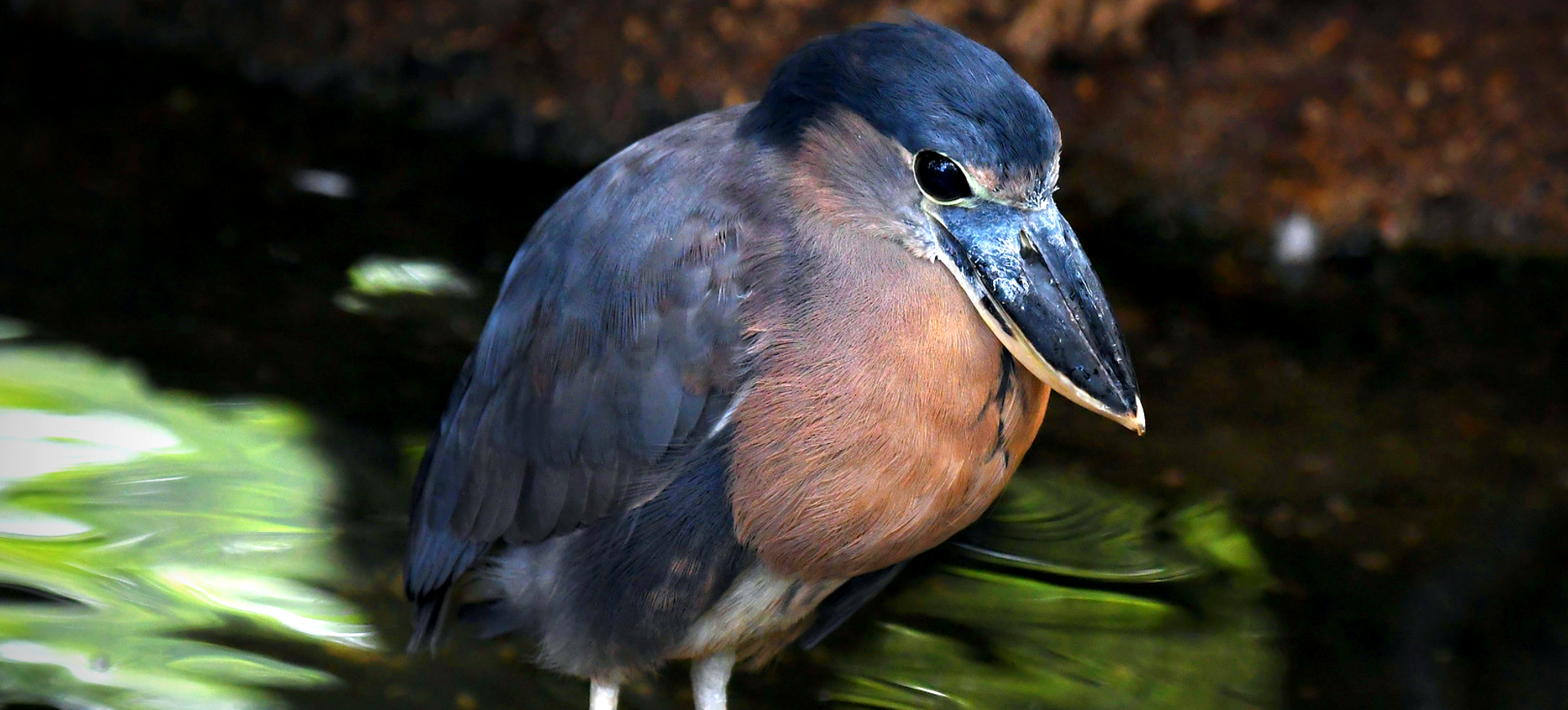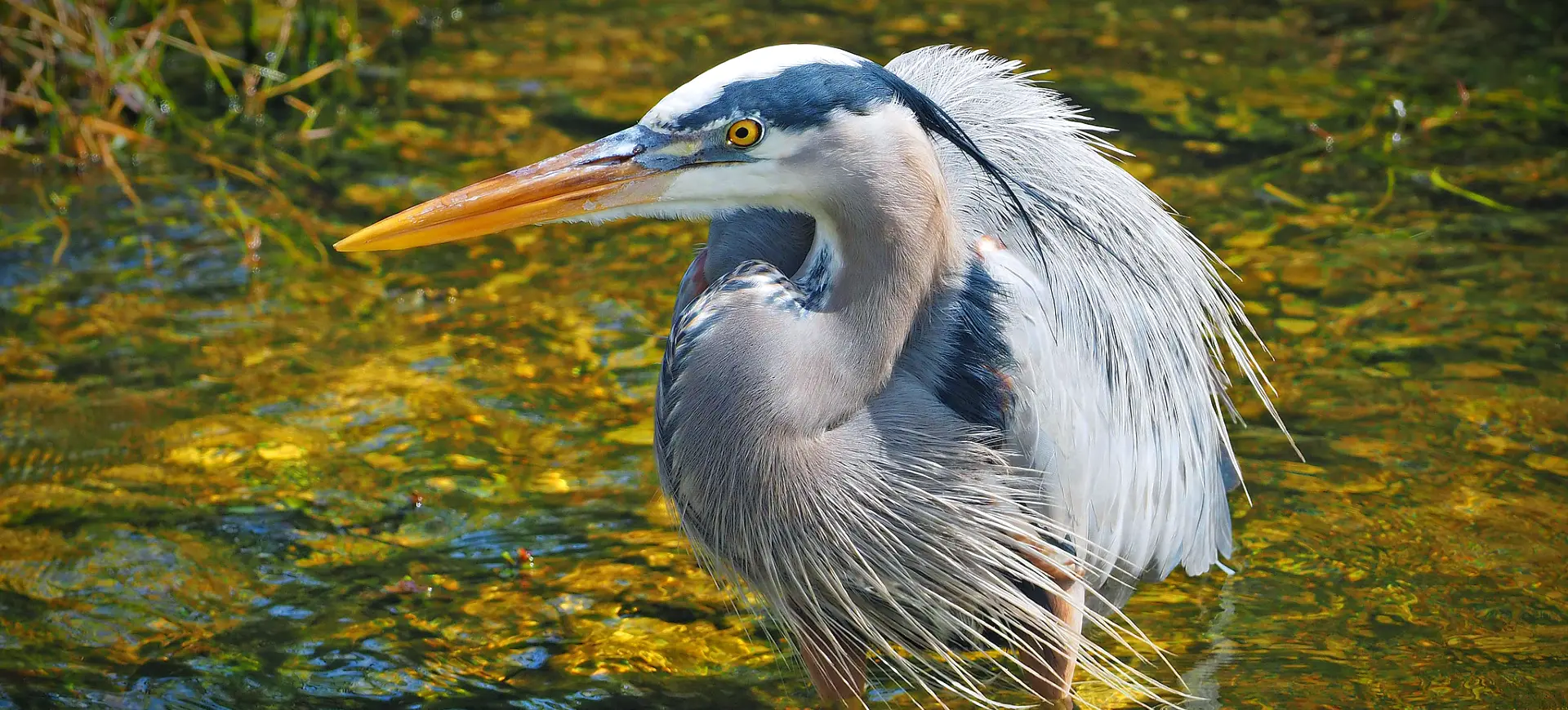Overview
The cattle egret (Bubulcus ibis) is a medium-sized heron known for associating with grazing animals. It is often seen perched on livestock or following them to catch insects disturbed by their movement. Unlike other egrets that primarily hunt in wetlands, cattle egrets are highly adaptable and thrive in grasslands, agricultural fields, and urban areas. They have a predominantly white body, a yellow bill, and long legs, with breeding adults developing orange plumage on their head, chest, and back. Originally native to Africa and Asia, they have expanded their range to every continent except Antarctica due to their strong flying ability and adaptability.
Cattle egrets are opportunistic feeders, consuming a variety of insects such as grasshoppers, crickets, and flies, as well as small vertebrates like frogs and lizards. Their foraging strategy involves following large animals, farm machinery, or wildfires, taking advantage of prey flushed out from vegetation. They are social birds, often nesting in large colonies with other wading birds, where they build simple platform nests in trees, shrubs, or reed beds. Their adaptability to human-altered landscapes has contributed to their rapid expansion and success in new environments.
Unlike many other heron species, cattle egrets are less dependent on aquatic habitats and can be found far from water sources. They are strong migratory birds, with populations in colder regions moving to warmer areas during winter. Although they sometimes compete with native bird species for nesting sites, their global population remains stable, and they are classified as a species of Least Concern by the IUCN. Their symbiotic relationship with large herbivores has made them common in grasslands, farms, and savannas worldwide.
Taxonomy
Kingdom
Phylum
Class
Order
Family
Genus
Species
Type
Current distribution:
Cattle egrets have a nearly global distribution on every continent except Antarctica. Originally from Africa and Asia, they naturally expanded their range to Europe and the Americas in the 19th and 20th centuries, aided by their strong flight capabilities. Today, they are found throughout North and South America, Australia, and parts of the Pacific Islands, where they have established stable populations. Their spread was facilitated by their ability to thrive in agricultural landscapes and coexist with livestock.
In many regions, cattle egrets are year-round residents, while populations in temperate zones migrate to warmer climates during winter. They are particularly abundant in tropical and subtropical areas, where food is available year-round. Despite their rapid range expansion, they have had minimal negative impacts on native ecosystems and are generally considered beneficial due to their role in pest control. Their population continues to grow, with new colonies forming in regions where they were previously absent.
Physical Description:
Cattle Egrets are relatively small herons, measuring about 18 to 22 inches (46 to 56 cm) in length, with a wingspan of approximately 34 to 38 inches (86 to 96 cm). They have a stocky build and short legs compared to other herons. The plumage is predominantly white, with adults developing orange-buff feathers on their heads, necks, and backs during the breeding season.
Sexual dimorphism is minimal, but males typically have slightly more vibrant breeding plumage and may be marginally larger. Their bill is short, stout, and yellow, turning orange in breeding adults. Juvenile Cattle Egrets lack the colored plumage of adults and have black bills. The bird’s overall appearance is tailored for foraging in grasslands and agricultural areas and wading in shallow water.

Lifespan: Wild: ~15 Years || Captivity: ~20 Years

Weight: Male: 9–18 oz (250–510 g) || Female: 7–16 oz (200–450 g)

Length: Male: 18–22 in (46–56 cm) || Female: 16–20 in (41–51 cm)

Height: Male: 18–22 in (46–56 cm) || Female: 16–20 in (41–51 cm)

Wingspan: Male & Female: 35–38 in (88–96 cm)

Top Speed: 31 mph (50 km/h) in flight
Characteristic:
Native Habitat:
Cattle egrets evolved in the grasslands and savannas of Africa and southern Asia, forming a close ecological relationship with grazing herbivores. They prefer open habitats such as grasslands, savannas, wetlands, agricultural fields, and urban parks. Unlike many other wading birds, they are not strictly dependent on water and are often far from lakes, rivers, or marshes. Their ability to exploit dry and semi-arid environments has contributed to their widespread global success.
During breeding season, cattle egrets nest in colonies located in trees, shrubs, or reed beds near water. They select nesting sites that provide protection from predators while allowing easy access to food. Although they prefer low-lying open landscapes, they are highly adaptable and have been observed nesting near human settlements and on artificial structures. Their flexible habitat preferences have allowed them to expand into regions far beyond their original range.
Biogeographical Realms:
Continents:
Countries:
Diet:
Diet & Feeding Habits:
Cattle egrets are opportunistic carnivores that feed on insects such as grasshoppers, flies, crickets, and beetles. They also consume spiders, worms, frogs, lizards, and small rodents, making them valuable for controlling pest populations. Unlike other egrets that hunt in water, cattle egrets forage in open fields, often following large animals or farm equipment to catch insects disturbed by movement. They use their sharp beaks to quickly snatch prey from the ground or mid-air.
They are known for their adaptability and will take advantage of changing food availability, feeding near wildfires, agricultural harvests, and even garbage dumps. When hunting independently, they walk through grassy areas, pausing to stab at prey with precise, rapid strikes. They drink water from ponds, streams, or puddles but are less dependent on wetland habitats than other heron species. In captivity, their diet is supplemented with insects, small fish, and commercially available bird food to mimic their natural feeding habits.
Mating Behavior:
Mating Description:
Cattle Egrets are colonial breeders, often nesting in large colonies that include hundreds to thousands of birds. These colonies are usually located in trees or shrubs near water bodies. During the breeding season, males perform elaborate courtship displays, which include stretching their necks, fluffing up their plumage, and vocalizing to attract females.
After pairing up, both males and females participate in building the nest. The female typically lays 3 to 4 pale blue eggs, and both parents share incubation duties. After hatching, both parents feed and care for the chicks. The social dynamics in the breeding colonies are complex, with interactions among individuals playing a crucial role in breeding success.
Reproduction Season:
Birth Type:
Pregnancy Duration:
Female Name:
Male Name:
Baby Name:
Social Structure Description:
Cattle Egrets are highly social birds, especially evident in their breeding colonies. Outside of the breeding season, they often roost in large groups and can be seen foraging in flocks, particularly in areas with abundant food sources. Their social structure during breeding is hierarchical, with dominant birds occupying the best nesting sites.
Interactions among individuals in colonies include cooperative and competitive behaviors, particularly during the establishment of nesting territories. The social dynamics of these colonies are complex and play a crucial role in the breeding success and survival of the species.
Groups:
Conservation Status:
Population Trend:
The global population of Cattle Egrets is large and stable, with no immediate threats to the species as a whole. Their adaptability to different environments, including human-altered landscapes, has contributed to their successful range expansion and population stability. They are among the few bird species that have benefited from expanding agricultural lands and livestock farming.
Despite their stable status, Cattle Egrets, like all wildlife, can be affected by environmental changes and habitat destruction. Maintaining healthy wetland and grassland ecosystems is important for the continued well-being of this species.
Population Threats:
Cattle Egrets face typical threats common to birds, including habitat loss due to wetland drainage and the expansion of urban areas. In some regions, they are also at risk from pesticide use in agricultural fields, which can poison the birds directly or reduce their insect prey.
Climate change may also pose a future threat by altering the ecosystems they depend on. However, their high adaptability and generalist feeding habits make them less vulnerable than more specialized species.
Conservation Efforts:
Conservation efforts for Cattle Egrets are generally focused on preserving wetlands and other key habitats. As a species with a Least Concern status, they are not the primary focus of conservation actions but benefit from broader environmental protection measures.
Efforts to reduce pesticide use, protect important breeding and foraging habitats, and maintain healthy ecosystems contribute to the conservation of Cattle Egrets. Given their role in controlling insect populations, farmers often see them as beneficial, which helps garner support for their conservation.
Additional Resources:
Fun Facts
- The Cattle Egret’s expansion across the Atlantic Ocean to the Americas in the 20th century is considered one of the most impressive natural range expansions of any bird species.
- They are known to follow cattle and tractors, mowers, and other machinery to catch insects disturbed by these activities.
- Unlike most heron species, Cattle Egrets spend much time in dry fields, far from water.
- Their ability to feed on various prey items contributes to their survival.
- They are among the few bird species that have adapted well to urban environments, often seen foraging in city parks and on lawns.
- During the non-breeding season, Cattle Egrets lose their colorful breeding plumage and return to being completely white.
- The relationship between Cattle Egrets and grazing animals is a classic example of a mutualistic interaction, where both parties benefit; the egrets get food, and the animals get relief from pests.
- Cattle Egrets have been observed riding on the backs of cattle, horses, and even rhinoceroses, picking off insects from the animals’ hides.
- Their leg and toe positioning is unique among herons, allowing them to walk easily on solid ground, which is useful for foraging in fields.
- Cattle Egrets are proficient flyers and can travel long distances, which has aided their global colonization.


